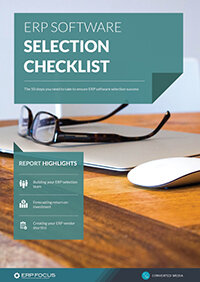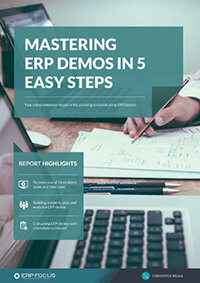WMS & ERP Software: The Lines Are Blurring
ERP and WMS have been sold separately for a long time now. More and more, ERP systems begun to add some WMS functions, claiming to be true WMS systems or at least have a WMS module. With the market for warehouse management software becoming an increasingly grey area, it is increasingly vital to understand the relationship between WMS & ERP systems.
Where ERP and WMS often differ is slotting functionality. Slotting means to optimize the location of inventory. It starts with directed put away. WMS will suggest we move items nearer to a shipping point as the ship date approaches. Being designed around inventory, storage, and logistics, many WMS systems will connect directly to transportation management software as well.
ERP software on the other hand, mainly looks at inventory from an accounting perspective. As long as the extended sum value of all the parts adds to the value of the inventory asset, the system is content. Years ago you could buy an accounting system that might have inventory details connected. MRP came around which looked on inventory as a nettable supply against the demands of sales orders. They both had details of items in inventory and were a match that became ERP.
Blurred Lines
Early systems did not even have bins to distinguish where an item was within a warehouse. All ERP & WMS systems have that functionality now. ERP Tools to manage kitting and shipping have improved, but that does not mean that they are perfected. Many systems will suggest ABC codes to help stratify our inventory. But if we want to know the best bin to use, we need to fire up Excel and analyze our transactions. When it is time to receive and put away items from a purchase order, the best we have is a default bin. If a receipt should be cross docked, we probably rely on a sticky note attached to the receiving person’s monitor or a hot list taped to the wall.
The lines are blurring. ERP today has a lot of features only found in WMS in the past. That is enough for a lot of businesses. We all need to look at our own ERP requirements. If your business includes a large high-volume warehouse, you probably need WMS. Integration is not usually an issue as today’s systems can talk to each other using web services.
Free white paper

Warehouse Management Systems 8 Steps to Success

Featured white papers
-

ERP Software Pricing Guide
Get the latest pricing information on over 80 popular ERP systems, and learn how to budget for your ERP project in our free guide
Download -

60-Step ERP Selection Checklist
Get the comprehensive checklist for your ERP selection project
Download -

ERP Demo Guide & Scorecard
Master your ERP demo with 5 easy steps using our free guide (includes demo scorecard)
Download
Related articles
-

The best ERP systems for process manufacturing
Consider these ERP systems when selecting your next process manufacturing ERP
-

CMMC Compliance: What Aerospace and Defense Manufacturers Need to Know
Key insights on CMMC compliance, deadlines, and securing DoD contracts with CMMC 2.0 certificatio...
-

5 ERP pricing definitions you need to understand
Have you mastered the ERP pricing lexicon yet? Getting to grips with these five definitions is a ...

